In the last post I said that Greece was one of the friendliest countries I’ve been in. I’ve visited a lot of friendly countries, but Greek friendliness was different.
Folks in many places don’t like to discuss politics too much. It’s a hot topic that can make people blow their tops. But people I met in Greece loved it. They enjoyed talking about everything under the sun. This post will show how this is connected with some of the West’s most basic assumptions about the world–it’s deepest thoughts have human sides that many people don’t realize.
Several things converged in ancient Athens to encourage assumptions that straight lines and static shapes and proportions are the bases of thought and nature.
1. The Agora was Athens’ commercial and political center. The law courts were there. So were the buildings where the political leaders met (the old and new bouleuterions and the Tholos). So was the market. The spring house were people got their water also stood there.
Some key things about Athens’ Agora were:
A. It wasn’t very big or fancy. It was a humble unpaved open area. It was dusty in the summer and muddy in the winter.
B. The temple of Hephaestos was on one side (above) and the Acropolis was on the other.
So the center of experience in ancient Athens was an open space in which everyone was within clear sight and earshot of each other. No huge palace, as in ancient China, and none of ancient India’s vast environment. The locus of truth was this clear field in which people interacted directly. Each was like a point, and all points were directly connected to each other by straight lines.
And this space was bracketed by temples and public stoas that were lined with columns. These pillars stood in well proportioned lines and each was clearly outlined.
2. The Theater of Dionysus was where people watched plays. It was an open semicircle, like most ancient Greek theaters (the one at Delphi’s in this photo).
Instead of sitting in a hall and facing the same direction, people faced each other. Like doing business in the Agora, watching a play was an intensely public experience to a degree that’s hard to imagine today. People watched the actors and each other’s reactions at the same time. Each person’s line of sight could fall on many of his peers.
3. The Pynx was an open-air platform where the assembly met. People decided civic policies in this open field within sight of each other and the Acropolis.
4. The Acropolis presided above all these venues.
The above shot’s from the Areopagus, which is a hill that borders the Agora.
So all daily life in Athens was centered in several public spaces that were:
1. Under the open sky.
2. Bordered by sacred buildings with proportions that were static and linear. They, rather than the graceful flows of energies in Thai temples, were models of divine order.
3. Small enough to allow all people to directly see and hear each other.
Ancient Athens was an impossible place to hide in. Every man lived out in the open. Women were supposed to stay in the home, so people knew where they were too. There was rarely a central political figure who dominated the town.
So billions of things converged into the focus on proportion, straight lines and abstract shapes. The interactions between all of Athens’ people, within clear public spaces and within sight of the Acropolis, encouraged a collective conviction that these are the bases of thought and reality–rather than China’s yin/yang flows or India’s vast fields of spiritual energies.
A simple line ain’t so simple. Neither are ideas that China, India and Thailand have held as most basic. Convictions about what’s most basic have human sides which were repeated every day in people’s lives and reinforced as models of order and well-being.
Greek cities didn’t encourage these convictions by themselves–Greece’s natural environment did too. Both converged.
When you start comparing different culture’s assumptions, you can fly higher than the Greek gods could–and much higher than political debates.
You can keep flying and find a key factor that shaped ancient Chinese thought and made it different from ancient Greece’s.

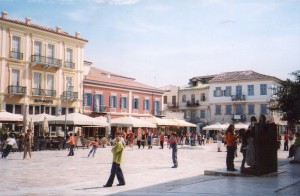
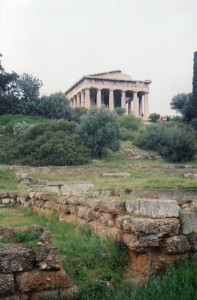
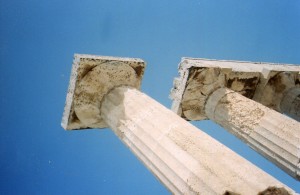
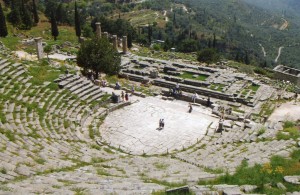
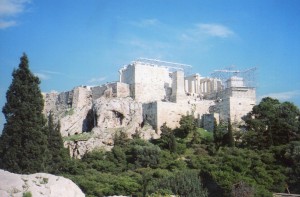
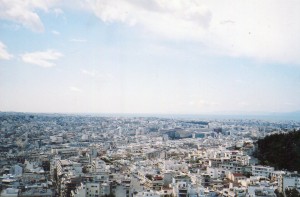
Comments on this entry are closed.